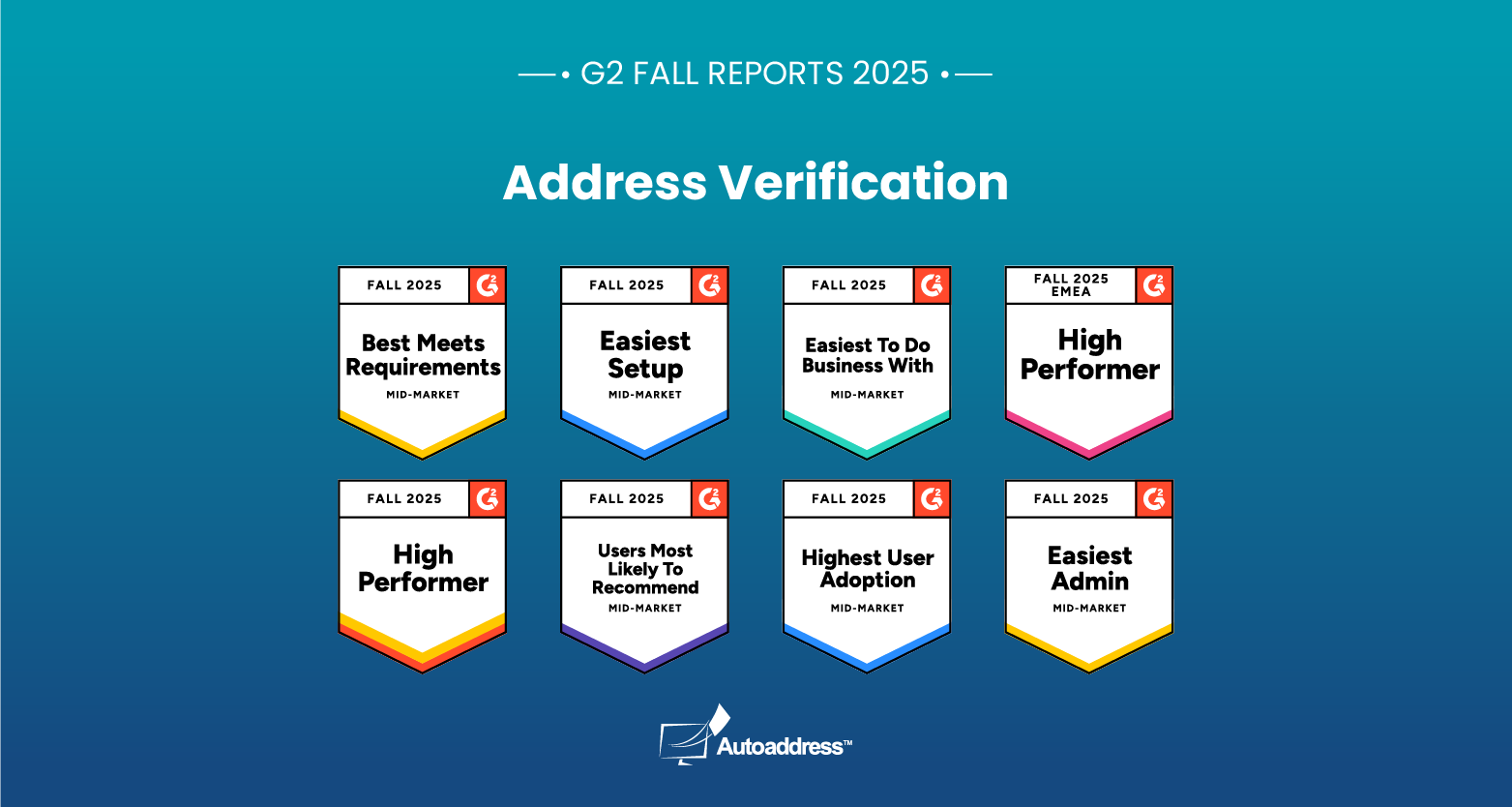Address validation matters in the age of agentic commerce

The future of shopping might not involve you at all. Imagine that. The customer, once central to every transaction, now superfluous to the process of choosing and paying for an online purchase.
That’s the promise of agentic commerce. A world where AI-powered systems take over the act of buying on your behalf.
What is agentic commerce?
Imagine simply saying to your phone, “Order a crime thriller novel from this year’s bestseller list.” A few seconds later, without pressing any buttons, your order is placed, paid for, and a confirmation email lands in your inbox. No browsing. No typing. No checkout form.
This is agentic commerce. A new way of shopping where autonomous AI agents initiate and complete purchases for you based on intent, habit, or instruction. These agents could be voice assistants, AI-powered chatbots, smart devices, or integrated apps. The common thread is that they don’t just help you shop, they shop for you.
We’re already seeing early hints of this shift. Voice assistants can reorder household items with a simple command, and ‘Subscribe & Save’ models let platforms initiate repeat purchases without user involvement.

Why the excitement?
From a consumer perspective, agentic commerce offers total convenience: no endless scrolling, no decision fatigue, no login friction, no manual form filling, etc.
For brands, this future holds the promise of higher conversion rates, faster transactions, and increased brand stickiness.
It’s the logical next step in the evolution of ecommerce. From mobile-first to voice-first to bot-first.
Convenience meeting complexity
Of course, for agentic commerce to work, an assistant needs more than just your intent. It must be able to handle all the mechanics of checking out, including selecting a payment method, choosing delivery options, providing a valid shipping address, and navigating forms that weren’t designed for bots.
In some cases, this already works behind the scenes through personal information stored in digital wallets, linked accounts, express checkout flows, and default preferences. But most retail sites still aren’t built for machine-readable checkout.
If an AI agent is making a purchase from a new retailer, stored details taken from the customer’s digital wallet or autofill profile might not match the checkout requirements. This can be particularly tricky when it comes to the shipping address.
AI doesn’t know where you live…thankfully!
Let’s look at what can happen if the AI submits a bad address:
- Outdated information: If the customer has moved but hasn’t updated their wallet, the package is sent to the wrong location.
- Missing fields: Apartment numbers, building names, or Eircodes may be omitted, making the address incomplete and potentially undeliverable.
- Formatting issues: Wallets often store addresses in a single text block that doesn’t align with a retailer’s structured form. Even if technically correct, it may trigger validation errors.
- Local compliance problems: Different countries require different address formats. An Irish or UK-style address might be rejected by a US or German checkout form if the correct fields are not matched.
It’s true that many agentic purchases will likely succeed without issue. For repeat, low-consideration items like pet food, groceries, or skincare, the shipping address and payment methods have already been validated by that site before.
The risk comes when known data is reused in an unknown context, i.e. a different retailer, a different form, a different country. An address that worked elsewhere could now be missing required fields or fail validation due to how it’s formatted. Sometimes the address is genuinely incorrect. Other times, it’s just incompatible with the checkout form.

What happens when the form pushes back?
- Flag missing or ambiguous components
- Return localised, structured, deliverable address formats
- Provide guidance or escalation when human input is required
This is where address validation tools like Autoaddress come in.
How Autoaddress solves the problem
Autoaddress acts as a silent but critical layer between autonomous checkout and successful fulfilment. As addresses are submitted, Autoaddress checks and cleans them. Common issues like typos, formatting errors, or missing data are automatically corrected.
Address intelligence
We apply fuzzy logic and contextual data to infer the correct address, even when user input is incomplete or unstructured.
Localised formatting
Whether it’s a house in Cork or a flat in London, addresses are returned in the appropriate structure for their region with no generic formats that break local rules.
Custom field mapping
If a merchant expects a certain form layout, Autoaddress maps the returned data to match those expectations, reducing integration issues.
Fail-safes and escalation paths
When an address is truly ambiguous or incorrect, Autoaddress can flag it for review or trigger a prompt to request clarification before the order goes out the door.
What if a human needs to step in?
In those moments where an address requires additional context, the checkout flow must be designed to fail gracefully. That might mean prompting the customer for clarification via email, or routing the order to a manual review queue.
Autoaddress supports this by providing the signals and structure to help businesses identify when an address is usable, fixable, or needs input. It doesn’t just validate data; it supports intelligent decision-making.
Conclusion
Agentic commerce is a powerful vision for the future of online shopping. But while the purchase might happen invisibly, the delivery still happens in the real world. Someone still needs to walk up to a door, and that door needs to be found. If we want to embrace a world of autonomous transactions, we can’t rely on the customer to catch their own errors. We need systems that:
- Validate addresses at the point of use
- Correct errors without human input
- Prompt for action only when necessary
- Format data correctly for delivery partners and logistics systems
Autoaddress supports this by providing the signals and structure to help businesses identify when an address is usable, fixable, or needs input. It doesn’t just validate data; it supports intelligent decision-making.


